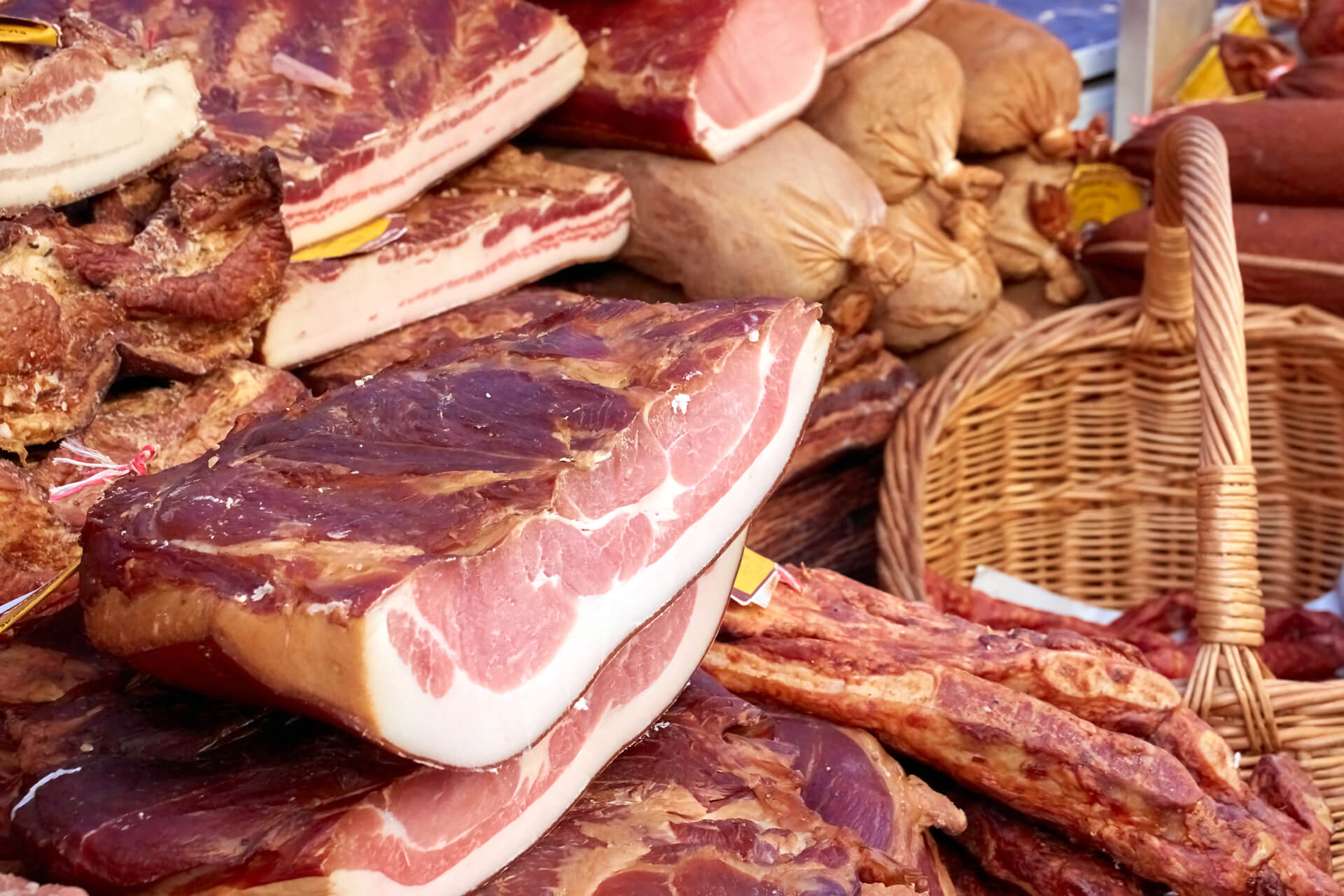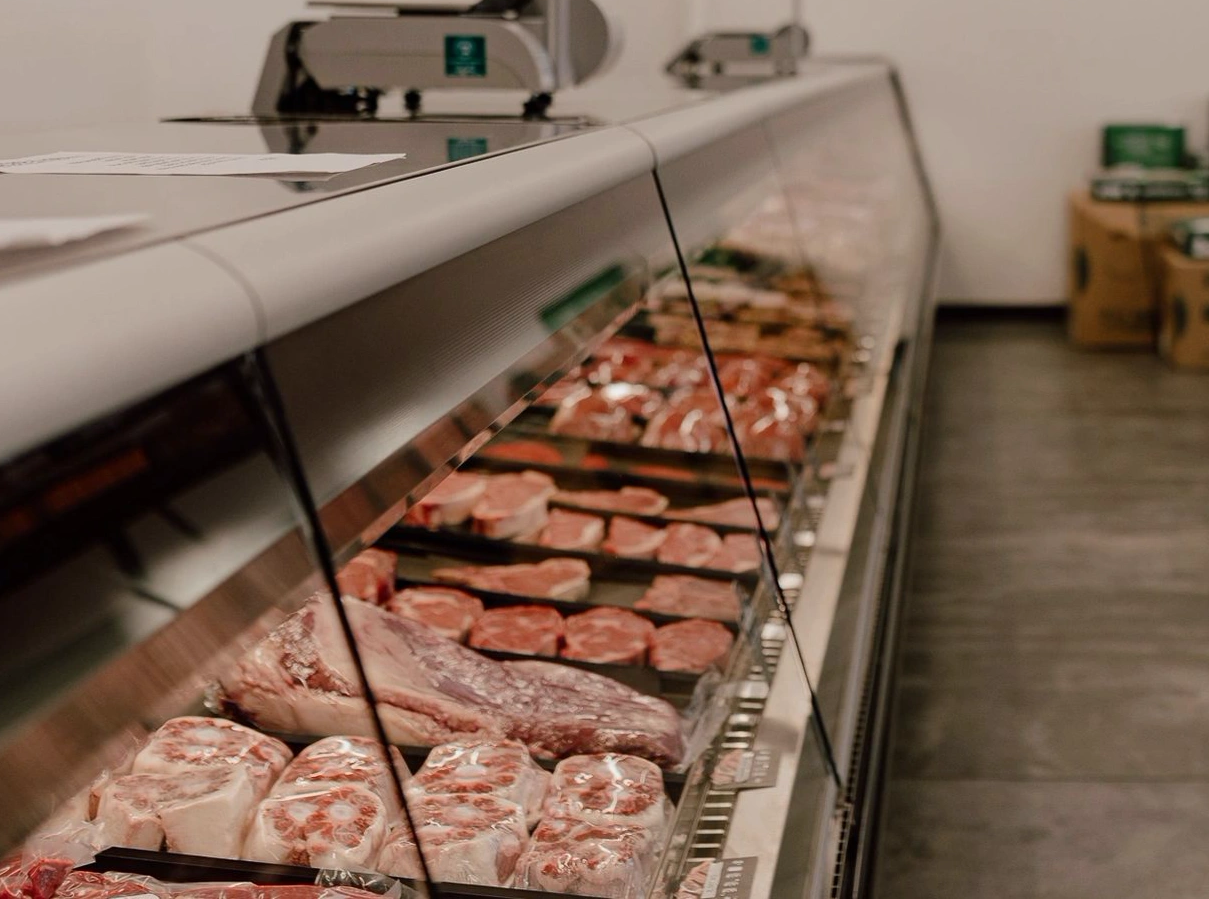Explore the Regional Taste at Bagley Farms Meat Market Edwardsville IL: Fresh and Delicious
Explore the Regional Taste at Bagley Farms Meat Market Edwardsville IL: Fresh and Delicious
Blog Article
Reveal the Art of the Butcher's Cut in a Modern Meat Market
In the ever-evolving landscape of modern meat markets, the butcher's cut has actually transcended its traditional roots, combining age-old craftsmanship with modern methods. bagley farms meat market edwardsville il. Today's butchers are not just cpus of meat; they are knowledgeable craftsmens who highlight sustainability and moral sourcing. Their know-how in picking and preparing cuts customized to certain culinary demands provides an unequaled dining experience. Yet, what genuinely establishes the modern butcher apart is their capability to build a deeper link in between customers and the beginnings of their meat. Exactly how do these masters balance tradition with technology, and what implications does this have for the future of meat usage?
Development of Butchery Methods

The mid-20th century saw butchery strategies better refined by clinical insights into muscle mass biology and meat aging, enhancing both inflammation and taste. Technologies like vacuum packaging and refrigeration extended item shelf-life, enabling butchers to branch out offerings and enhance quality assurance. This duration also marked the rise of specific tools, such as band saws and meat slicers, which boosted precision and effectiveness in meat handling.
Digital systems now assist in monitoring pet provenance and enhancing cuts to meet specific consumer preferences. In addition, a rebirth in artisanal butchery has arised, mixing standard abilities with modern-day understanding to provide to customers seeking moral and lasting meat options.

Understanding Meat Cuts

Comprehending the details of meat cuts is important for both butchers and consumers looking for quality and value. For butchers, exact cuts mirror ability and regard for the craft, ensuring marginal waste and ideal return.
The primary classifications of meat cuts include primal, sub-primal, and retail cuts. Primal cuts, such as the loin, rib, and chuck, are the huge sections originally divided from the carcass. Butchers after that damage these down further into sub-primal cuts, prior to ultimately creating retail cuts readily available to consumers, like ribeye or tenderloin. Each stage needs mindful attention to physiological structure and muscle composition.
Recognizing muscle mass make-up is critical; muscular tissues utilized extra often by the animal often tend to be tougher and are best fit for slow-moving cooking methods, while less-used muscles, like those found in the loin, are a lot more tender and ideal for grilling or roasting. Experience with these differences empowers customers to make educated choices, improving their culinary endeavors.
Selecting High Quality Meat
Picking the appropriate meat involves even more than just choosing an aesthetically attractive item from the screen. The art of picking high quality meat requires a discerning eye and understanding of specific features that indicate freshness and excellence. To start with, take notice of the shade; beef should have a brilliant, cherry-red shade, while lamb must display a soft pink tone, and pork a pale pink. This suggests the meat is fresh and hasn't been revealed to oxygen for also long.
Second of all, take into consideration the marbling, which refers to the white streaks of fat within the muscle mass. Proper marbling is a key indicator of tenderness and taste, as it melts during food preparation, boosting the meat's juiciness. Keep in mind, greater marbling frequently correlates with exceptional high quality cuts, such as USDA Prime.
Texture is one more essential variable; meat should really feel solid to the touch, not slimed or overly soft. Furthermore, be her response conscious of the scent. Fresh meat needs to have a tidy, neutral odor, devoid of any type of sour or repulsive odors.
Coupling Cuts With Cooking Methods
Effectively combining cuts of meat with the appropriate cooking methods is vital for achieving optimal flavor and appearance. These techniques improve the meat's natural tastes and make certain a juicy surface.
On the other hand, harder cuts like brisket and chuck roast are rich in collagen, which breaks down into gelatin when cooked slowly. These cuts are perfect for braising or slow-moving roasting, permitting the meat to tenderize over time and establish deep, complex tastes. Similarly, cuts such as short ribs and pork shoulder make out well with slow-cooking approaches, where prolonged cooking times change their durable appearances right into delicious meals.
Lamb shanks and oxtail, which call for extended cooking to soften, are perfect candidates for stewing or sluggish simmering. These methods coax out abundant, hearty flavors while keeping dampness. By recognizing the distinct attributes of each cut, cooks and home cooks alike can elevate their culinary creations, making sure each dish is both satisfying and memorable.
The Butcher's Duty Today
Browsing the advancing landscape of the modern-day meat market, the butcher's role today expands beyond plain preparation of cuts. Contemporary butchers are cooking craftsmens, instructors, and supporters for sustainable techniques.
In enhancement to crafting specific cuts, butchers now engage directly with customers, supplying cooking recommendations and tailoring selections to match individual Continue demands and preferences. Their competence in meat aging, marbling, and taste accounts encourages customers to make informed decisions, enhancing their culinary experiences. This individualized service exemplifies the butcher's evolving function as a trusted consultant in the kitchen area.
Moreover, butchers are crucial in lessening waste, using entire pets to produce varied items such as sausages and stocks - bagley farms meat market edwardsville il. This thorough method not only respects the pet yet also aligns with modern sustainability objectives. This way, the contemporary butcher personifies both practice and technology, adapting to an ever-changing market while preserving the creativity and honesty of their craft

Verdict
The modern butcher's craft delicately weaves conventional this contact form methods with contemporary advancements, stressing lasting practices and moral sourcing. Mastery in recognizing varied meat cuts and quality signs equips butchers to give educated suggestions, straightening certain cuts with ideal food preparation techniques. This proficiency not just boosts cooking experiences yet also strengthens the link between customers and the origins of their food. By honoring historical techniques while welcoming contemporary demands, the butcher's role continues to be crucial in today's sophisticated meat market.
Report this page